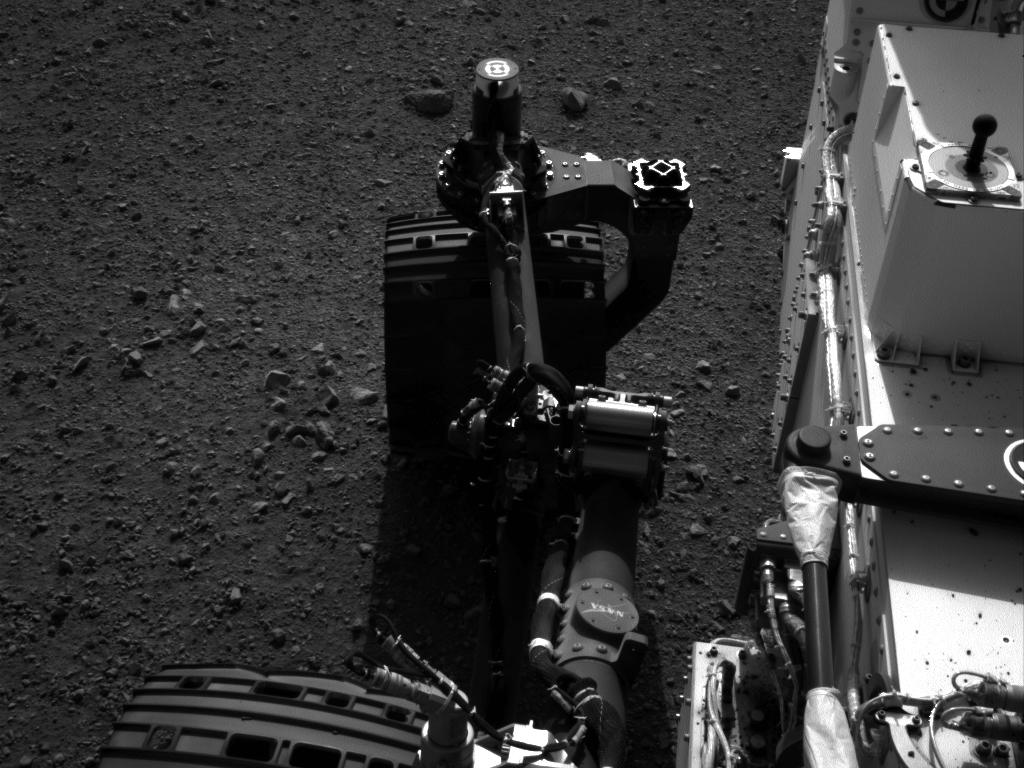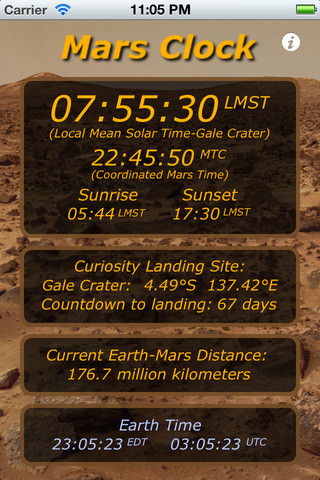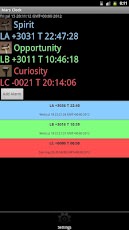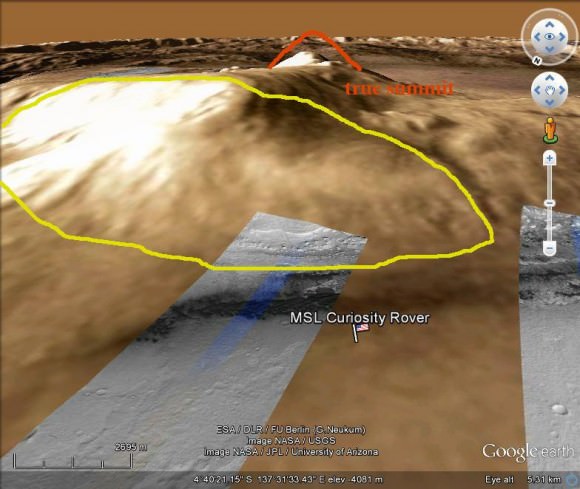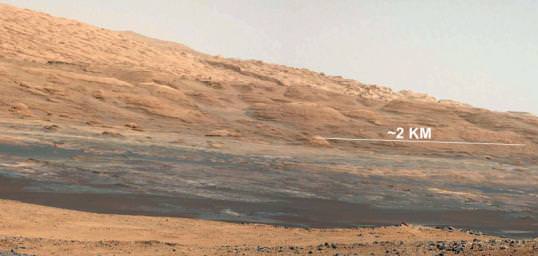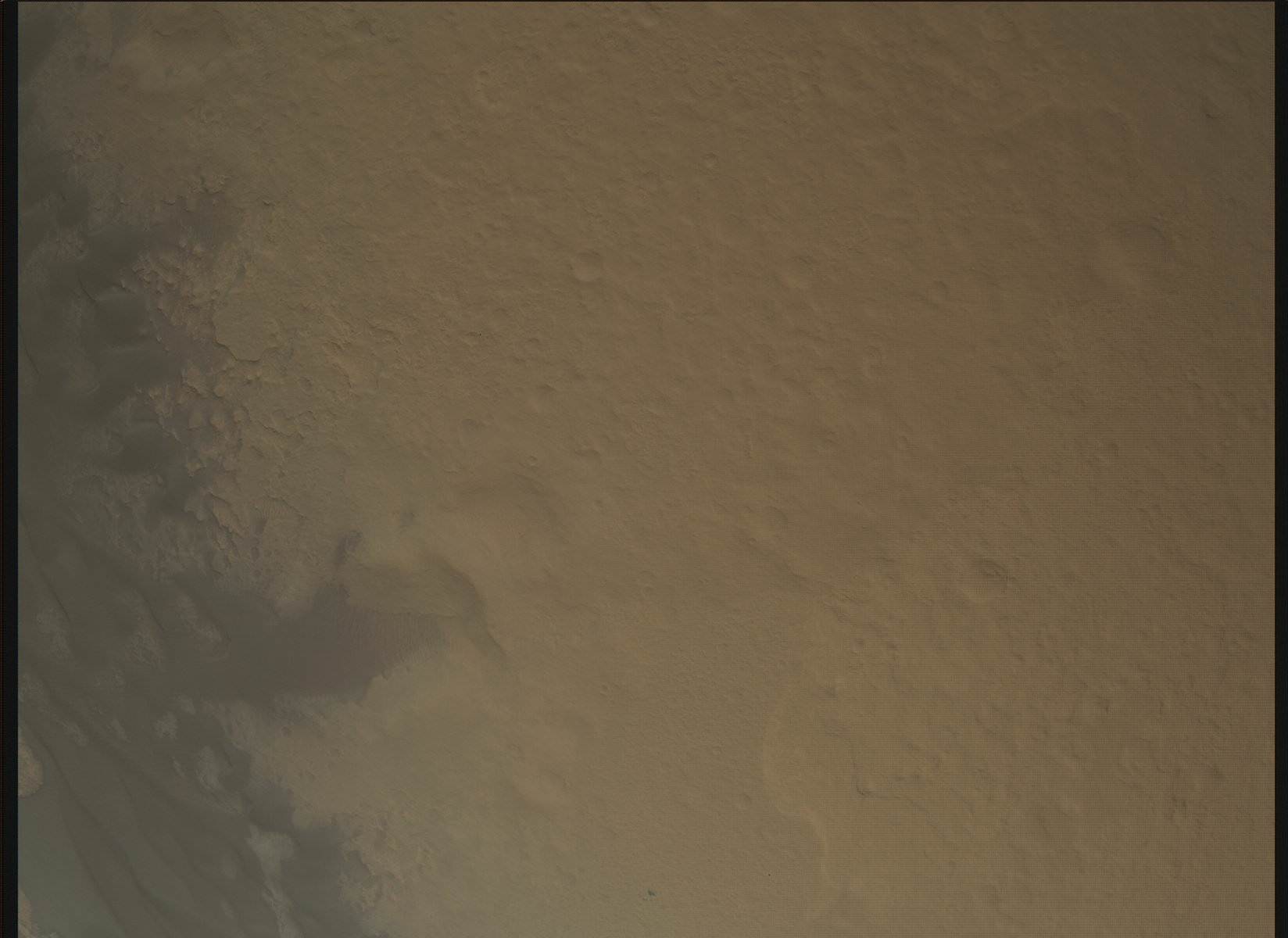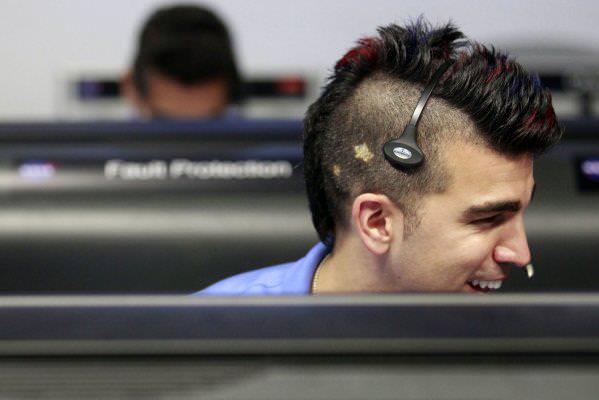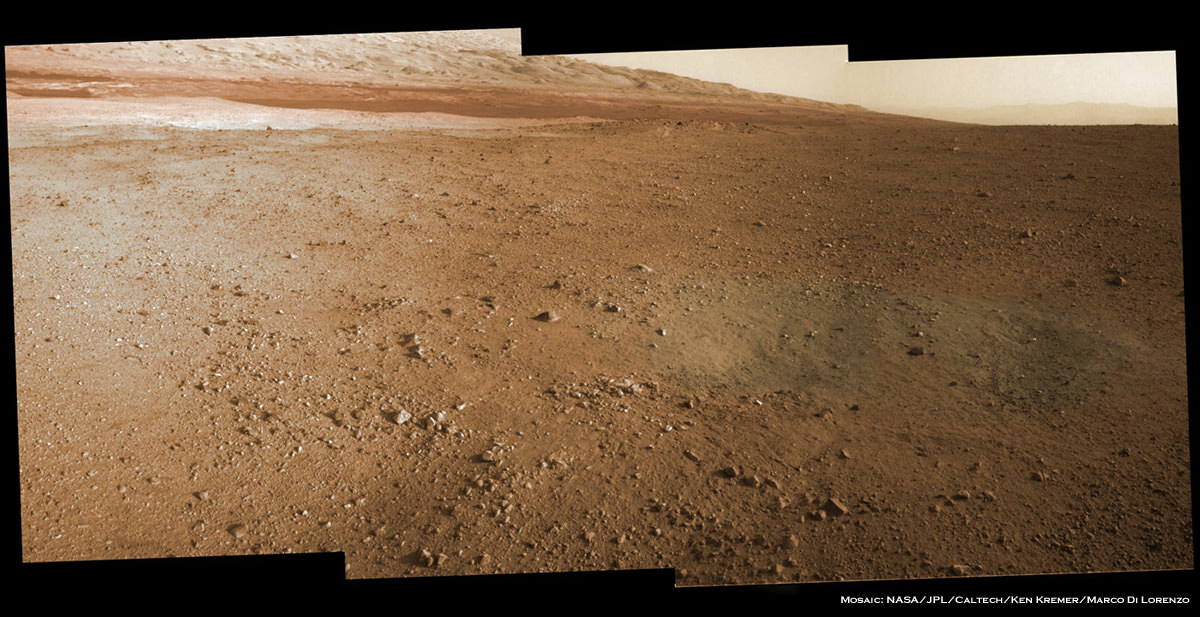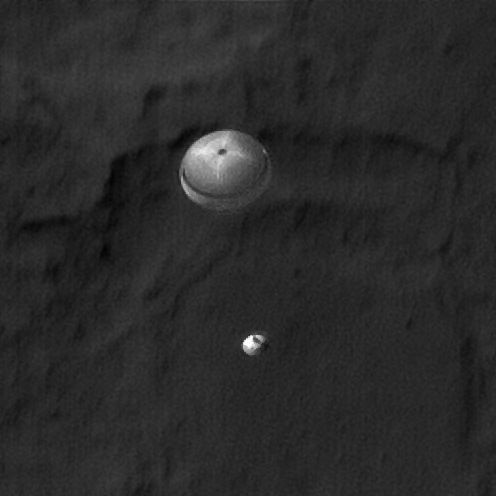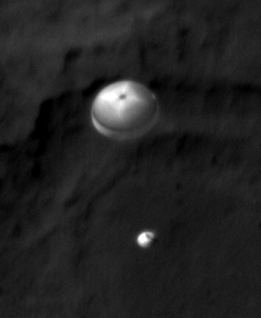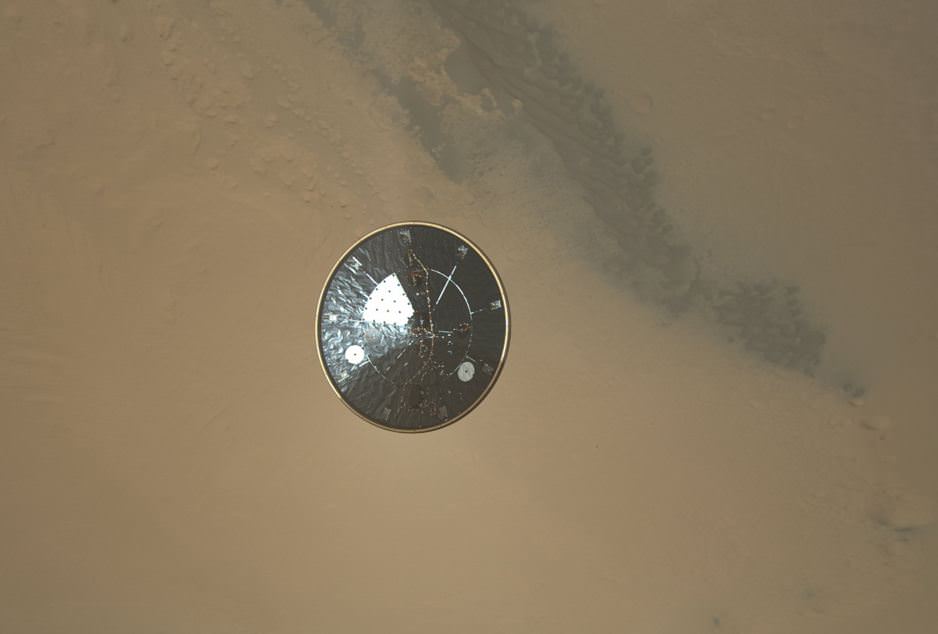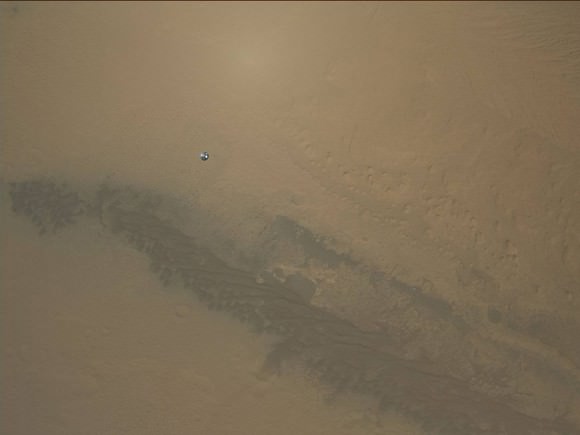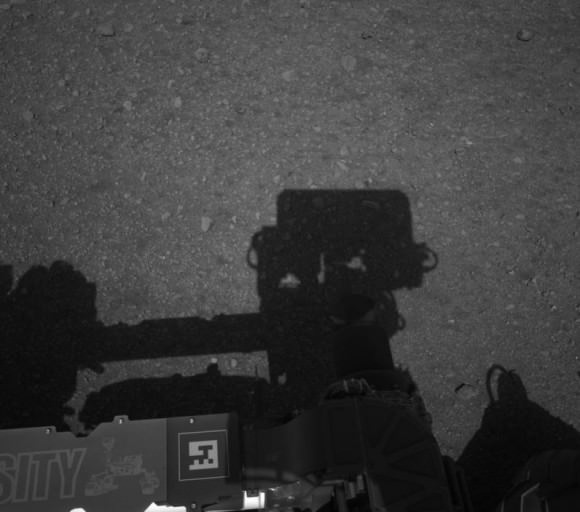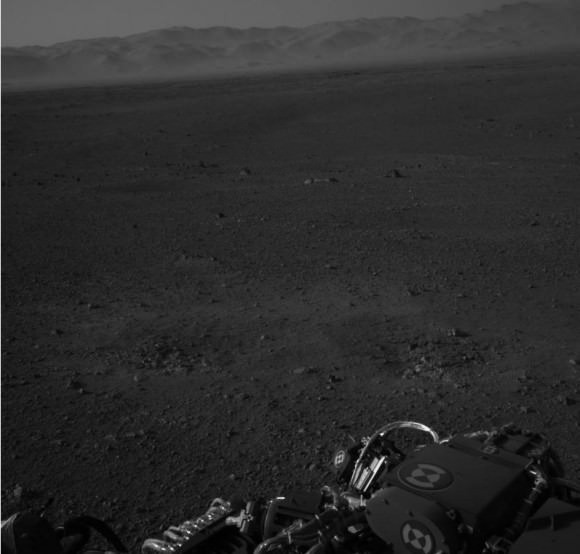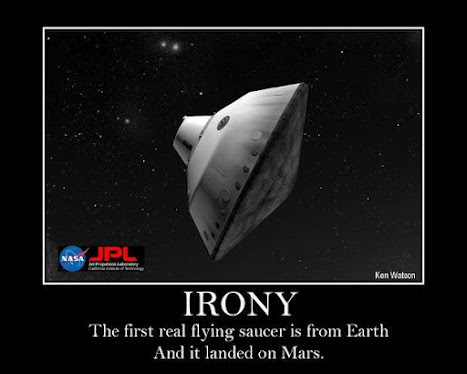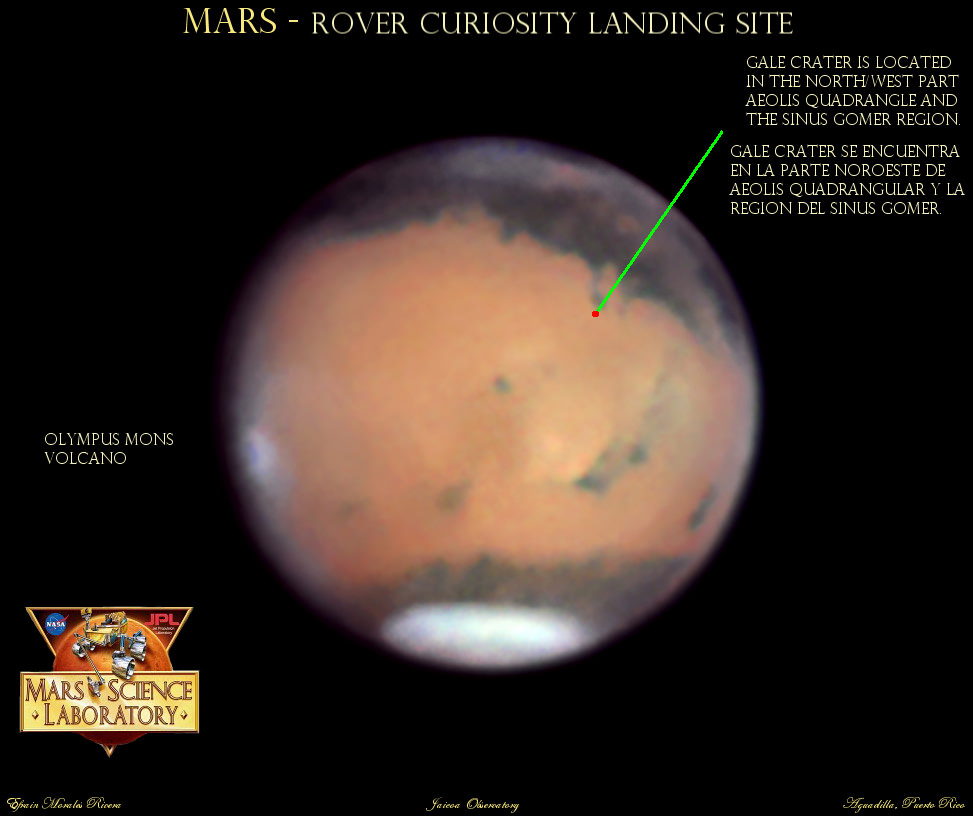Click to animate: this gif image shows the movement of the rear right wheel of NASA’s Curiosity as rover drivers turned the wheels in place at the landing site on Mars. Image credit:NASA/JPL-Caltech
She turned her right rear wheel in and turned her right rear wheel out in a sort of Hokey-Pokey-like action in preparation for actually moving inside Gale Crater. Yesterday, the Curiosity rover’s first movements was this “wiggle” of each of the four corner wheels for the first time. Curiosity Mission Manager Michael Watkins said this was a test of the steering actuators on the wheels, and was critical preparation for Curiosity’s first drive on Mars.
Late last night, the rover team sent commands for doing the first drive, and we’ll likely have information on whether that first drive was successful, as JPL has a news conference planned for 17:00 UTC, 1 pm EDT on Wednesday.
Below is a video animation of the rover’s first arm movements, as well:
Other news from the press conference yesterday is that all the instruments are working well on the rover so far, except for one of the instruments on the weather station.
One of the two sets of Rover Environmental Monitoring Station (REMS) wind sensors is not providing data. “One possibility is that pebbles lofted during the landing hit the delicate circuit boards on one of the two REMS booms,” said Curiosity Deputy Project Scientist Ashwin Vasavada of NASA’s Jet Propulsion Laboratory, Pasadena, Calif. “We will have to be more clever about using the remaining wind sensor to get wind speed and direction.”
The rover’s weather station, build by researchers in Spain, checks air temperature, ground temperature, air pressure, wind and other variables every hour at the landing site in Gale Crater. On a typical Martian day, or “sol,” based on measurements so far in the two-week old mission, air temperatures swing from minus 2 to minus 75 Celsius (28 degrees to minus 103 degrees Fahrenheit). Ground temperatures change even more between afternoon and pre-dawn morning, from 3 to minus 91 Celsius (37 degrees to minus 132 degrees Fahrenheit ).
“We will learn about changes from day to day and season to season,” said Javier Gómez-Elvira of the Centro de Astrobiología, Madrid, Spain, principal investigator for REMS.
The team predicts that within a week or so, daily Mars weather reports from Curiosity will become available at this website: http://cab.inta-csic.es/rems/marsweather.html or bit.ly/RzQe6p.
Another instrument provided by Russia is checking for water bound into minerals in the top one meter (three feet) of soil beneath the rover. It employs a technology that is used in oil prospecting on Earth, but had never before been sent to another planet.
“Curiosity has begun shooting neutrons into the ground,” said Igor Mitrofanov of Space Research Institute, Moscow, principal investigator for this instrument, called the Dynamic Albedo of Neutrons, or DAN. “We measure the amount of hydrogen in the soil by observing how the neutrons are scattered, and hydrogen on Mars is an indicator of water.”
The most likely hydrogen to be found in shallow ground of Gale Crater, near the Martian equator, is in hydrated minerals. These are minerals with water molecules, or related ions, bound into the crystalline structure of rocks. They can tenaciously retain water from a wetter past after all free water has gone.
With plans for Curiosity to begin roving, there will soon be new places for all the instruments to measure. The rover team explained the first real drive today will be a very simple execution: forward about 3 meters, then a turn in place of 90 degrees to the right, then a 2-meter drive backwards. Estimates are the rover will end up about 3 meters from its current position and be facing south instead of east.
Emily Lakdawalla has a nice 4-view animation of the rover’s wheel wiggle, showing three wheels and how the shadow of the rover itself moved.

